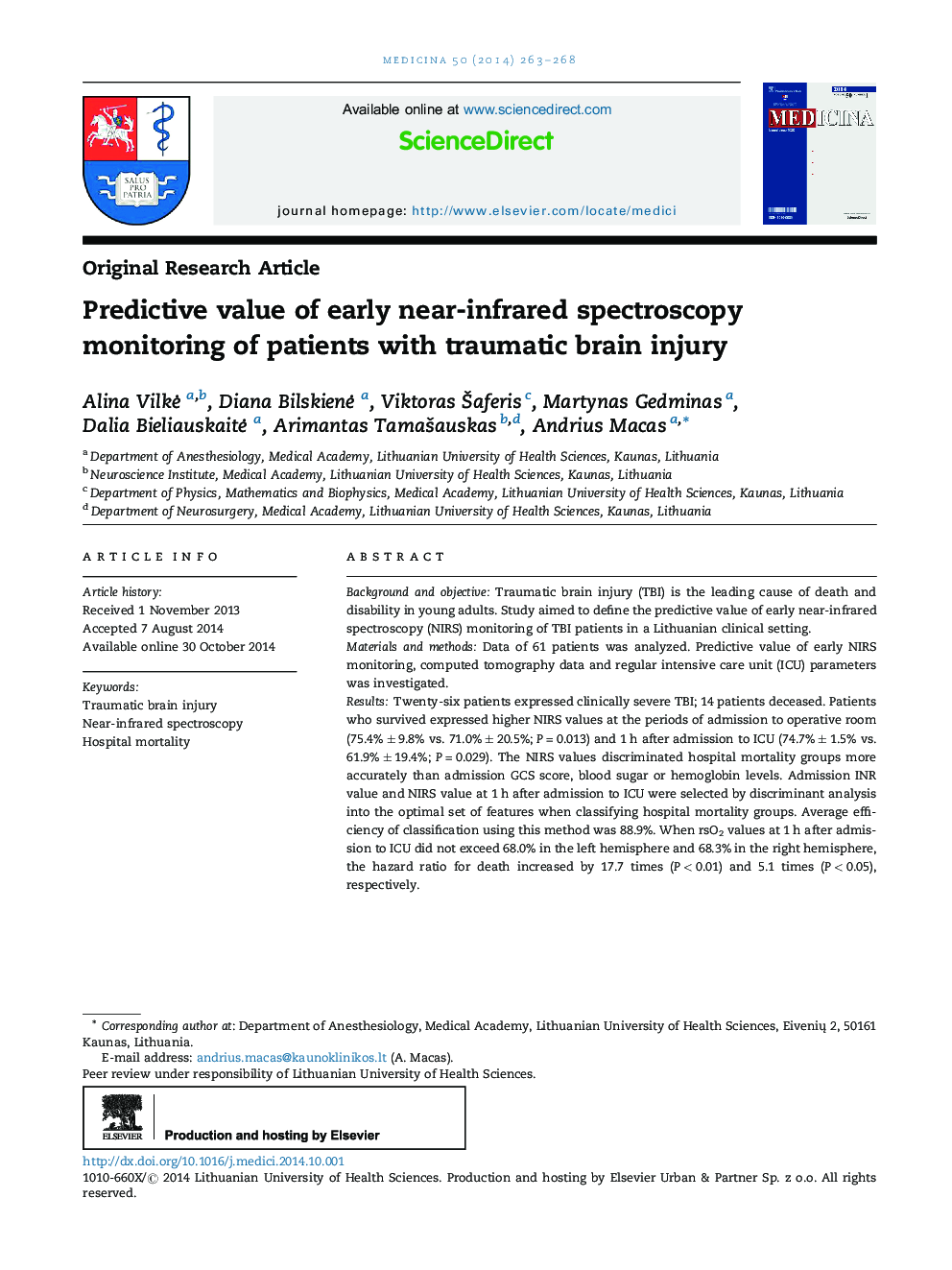| کد مقاله | کد نشریه | سال انتشار | مقاله انگلیسی | نسخه تمام متن |
|---|---|---|---|---|
| 2687171 | 1142997 | 2014 | 6 صفحه PDF | دانلود رایگان |
Background and objectiveTraumatic brain injury (TBI) is the leading cause of death and disability in young adults. Study aimed to define the predictive value of early near-infrared spectroscopy (NIRS) monitoring of TBI patients in a Lithuanian clinical setting.Materials and methodsData of 61 patients was analyzed. Predictive value of early NIRS monitoring, computed tomography data and regular intensive care unit (ICU) parameters was investigated.ResultsTwenty-six patients expressed clinically severe TBI; 14 patients deceased. Patients who survived expressed higher NIRS values at the periods of admission to operative room (75.4% ± 9.8% vs. 71.0% ± 20.5%; P = 0.013) and 1 h after admission to ICU (74.7% ± 1.5% vs. 61.9% ± 19.4%; P = 0.029). The NIRS values discriminated hospital mortality groups more accurately than admission GCS score, blood sugar or hemoglobin levels. Admission INR value and NIRS value at 1 h after admission to ICU were selected by discriminant analysis into the optimal set of features when classifying hospital mortality groups. Average efficiency of classification using this method was 88.9%. When rsO2 values at 1 h after admission to ICU did not exceed 68.0% in the left hemisphere and 68.3% in the right hemisphere, the hazard ratio for death increased by 17.7 times (P < 0.01) and 5.1 times (P < 0.05), respectively.ConclusionsNIRS plays an important role in the clinical care of TBI patients. Regional brain saturation monitoring provides accurate predictive data, which can improve the allocation of scarce medical resources, set the treatment goals and alleviate the early communication with patients’ relatives.
Journal: Medicina - Volume 50, Issue 5, 2014, Pages 263–268
